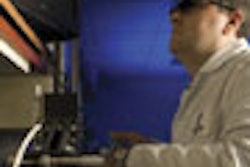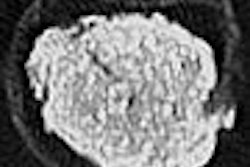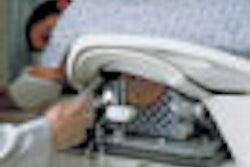Real-time 3D transesophageal echocardiography (TEE) can help guide the treatment of patients with heart conditions such as atrial septal defect and congenital heart disease, according to a pair of presentations at the recent Pediatric and Adult Interventional Cardiac Symposium (PICS).
In the first study, researchers from the University of Chicago and Rush University, also in Chicago, reported that a newly developed real-time 3D TEE probe produced more precise measurements of atrial septal defect (ASD).
The complex shapes of ASD are not well characterized by the current method of 2D TEE, and the preferred method, intracardiac echocardiography (ICE), is costly and not widely available, according to the study presented at the July PICS meeting in Las Vegas. As an alternative modality, the researchers sought to determine the effectiveness of using real-time 3D TEE for guiding transcatheter-based ASD closure, and to assess its accuracy compared to 2D TEE and ICE in determining ASD dimensions.
A total of 13 consecutive patients with ostium secundum ASD underwent transcatheter ASD closure with an Amplatzer septal occluder device (ASOD) under general anesthesia. Real-time 3D TEE, 2D TEE, and ICE images were taken sequentially during placement of the Amplatzer device to compare each method's ability to assess ASD and balloon dimension.
Researchers found the procedure to be feasible in all patients. Real-time 3D TEE was able to produce high-quality images and had dynamic en-face visualization, which allows precise measurement of ASD dimensions, according to the authors.
In measuring ASD and balloon dimensions, real-time TEE versus 2D TEE produced a mean difference in measurement of 10.5 mm in the long-axis dimension and -1.4 mm in the short axis. Real-time 3D TEE tended to produce greater measurements of balloon dimension (10.9 mm) than ICE.
The authors concluded by stating that real-time 3D TEE can be used to guide transcatheter ASD closure at a lower cost and with more accurate measurements than the other techniques.
In another paper presented at the PICS meeting, a real-time 3D TEE probe helped guide catheterization procedures in patients with congenital heart disease (CHD), according to researchers from the Medical University of South Carolina in Charleston. The probe's ability to visualize anatomic structures makes it "very useful" for these procedures, according to the authors.
For this study, 15 patients received real-time 3D TEE during catheterizations for the following:
- 10 ASD/patent foramen ovale (PFO) device closures
- 3 transseptal puncture guidances
- 1 ventricular septal defect device closure
- 1 cryoablation guidance
Of note, one ASD patient was omitted due to probe/patient mismatch.
In the ASD/PFO cohort, real-time 3D TEE helped identify location and nonuniform shapes for all 10 patients (one patient had multiple defects). Device position also was verified.
In the transseptal puncture cohort, real-time 3D TEE confirmed the appropriate sheath position, and the needle was "easily" visualized puncturing through the septum, according to the authors. Most importantly, the operator was able to continuously monitor the 3D relationship of the catheter to the left atrial free wall, they said.
By Caitanya Min
AuntMinnie.com contributing writer
September 4, 2008
Related Reading
Echocardiography predicts pulmonary artery pressure in ventilated patients, March 25, 2008
3D echo effective in aortic stenosis appraisal, July 3, 2007
Three-dimensional echocardiography useful for coronary artery disease diagnosis, June 5, 2007
Copyright © 2008 AuntMinnie.com



















